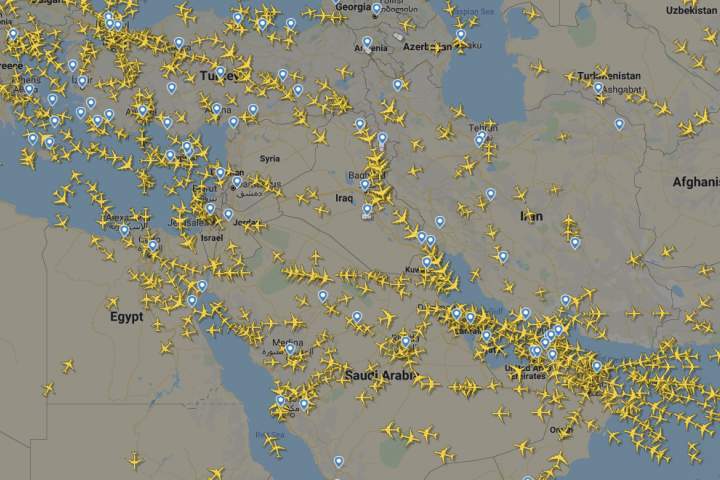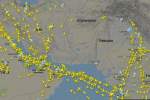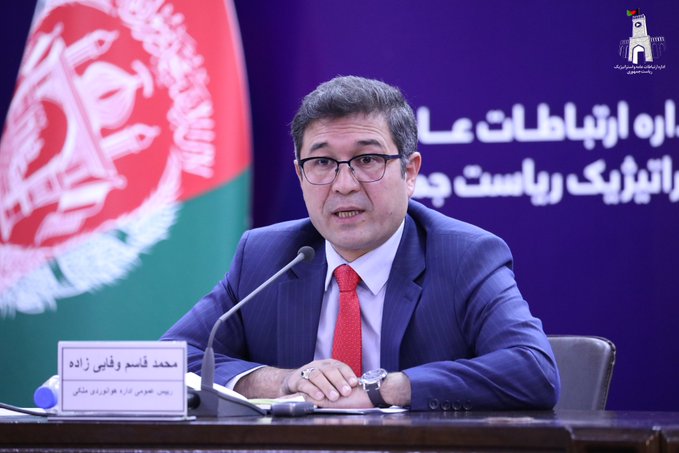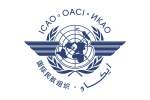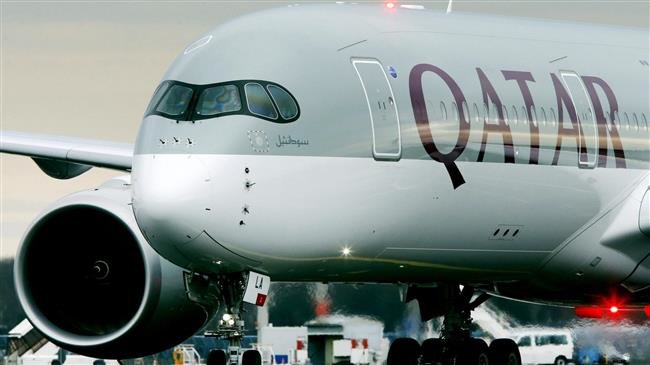Afghanistan’s Civil Aviation Authority on Monday said the country is raking in an estimated revenue of around $100,000 per day after the biggest international airlines began steering clear of Iranian airspace in wake of the flare-up of Iran’s tensions with the US earlier this month.
Publish dateWednesday 22 January 2020 - 02:31
Story Code : 201457
Following the downing of a Ukrainian aircraft in Tehran by the Iranian military a fortnight ago, many airlines – seeing their stakes at risk – avoided Iran airspace and diverted their flights over Afghanistan, advertently giving a boost to country’s aviation revenues.
Mohammad Qasim Wafaeezada, head of Afghanistan’s Civil Aviation Authority, said more than 400 aircrafts pass through Afghanistan’s airspace every day. Even if the region’s airspace returned to normal, a number of aviation companies would continue to use the Afghan air space instead of other countries.
The civil aviation authority earns a whopping $700 from every airline crossing the country’s airspace. Two new routes have also been created which contributed to the marginal revenue hike.
A tourism company union says the newly-increased revenue should be spent on improving aviation services and improving the country’s infrastructure and airports.
“Afghanistan’s airports do not meet standards, and this is a huge challenge. Companies interested in coming to Afghanistan do not come due to the lack of standards-meeting airports,” said Massoud Bina, the union deputy.
However, officials at the civil aviation authority maintain that the main reason for the increased revenue is that various aviation companies, and the International Air Transport Association (IATA), do in fact have faith in Afghanistan’s aviation capacity.
The head of the civil aviation authority said that with the new changes, the annual revenue of the country would increase by more than $30 million per year.
Over the past year, however, the aviation authority has failed to meet its revenue target.
The authority was supposed to generate Afs10 billion during the fiscal year but could raise only Afs7.2 billion.
In addition to its revenue from transit flights, the country’s aviation authority generates revenue from other airfield services, which include landing and parking fees, but still, 60% of the authority’s revenues are gained from airspace fees.
Mohammad Qasim Wafaeezada, head of Afghanistan’s Civil Aviation Authority, said more than 400 aircrafts pass through Afghanistan’s airspace every day. Even if the region’s airspace returned to normal, a number of aviation companies would continue to use the Afghan air space instead of other countries.
The civil aviation authority earns a whopping $700 from every airline crossing the country’s airspace. Two new routes have also been created which contributed to the marginal revenue hike.
A tourism company union says the newly-increased revenue should be spent on improving aviation services and improving the country’s infrastructure and airports.
“Afghanistan’s airports do not meet standards, and this is a huge challenge. Companies interested in coming to Afghanistan do not come due to the lack of standards-meeting airports,” said Massoud Bina, the union deputy.
However, officials at the civil aviation authority maintain that the main reason for the increased revenue is that various aviation companies, and the International Air Transport Association (IATA), do in fact have faith in Afghanistan’s aviation capacity.
The head of the civil aviation authority said that with the new changes, the annual revenue of the country would increase by more than $30 million per year.
Over the past year, however, the aviation authority has failed to meet its revenue target.
The authority was supposed to generate Afs10 billion during the fiscal year but could raise only Afs7.2 billion.
In addition to its revenue from transit flights, the country’s aviation authority generates revenue from other airfield services, which include landing and parking fees, but still, 60% of the authority’s revenues are gained from airspace fees.
avapress.net/vdciwzaryt1au52.ilct.html
Tags
Top hits
